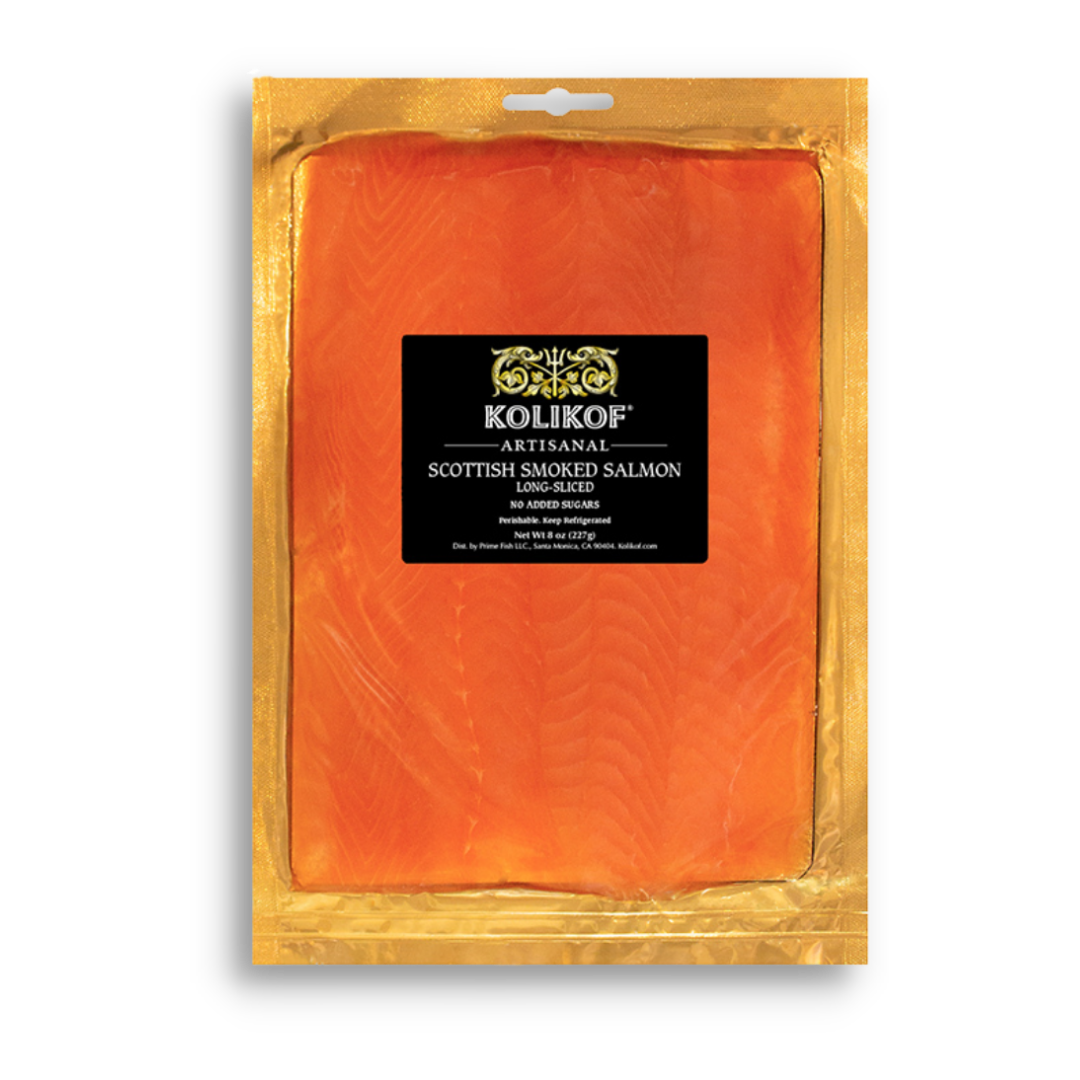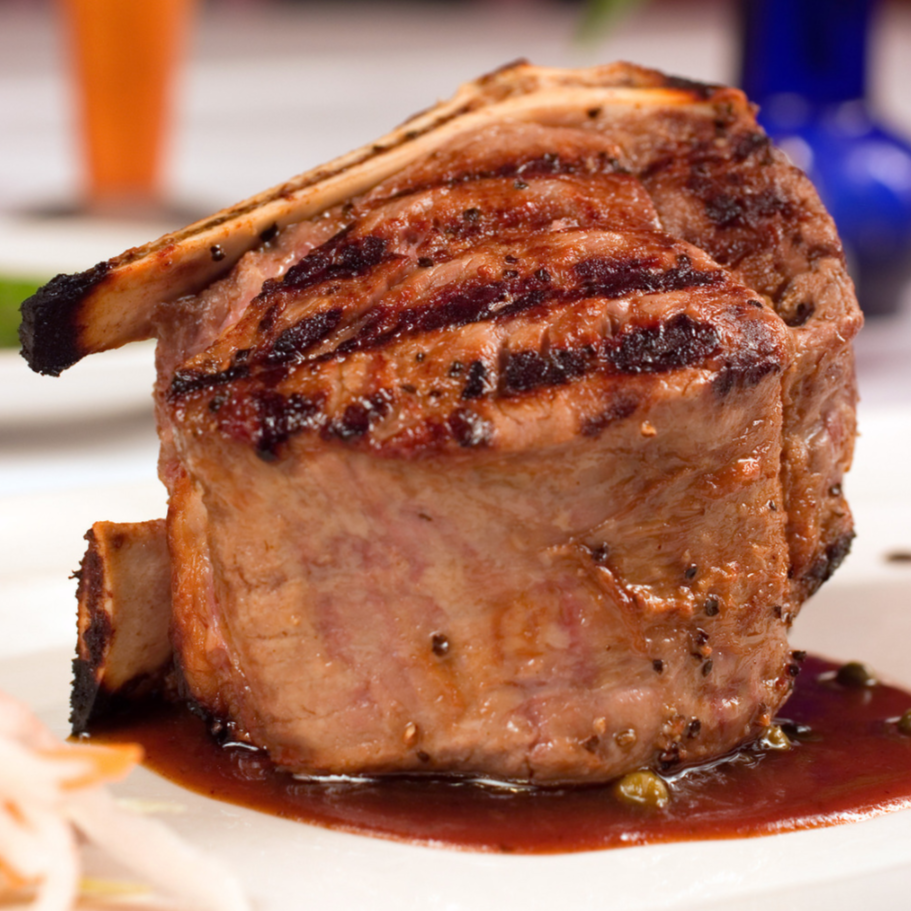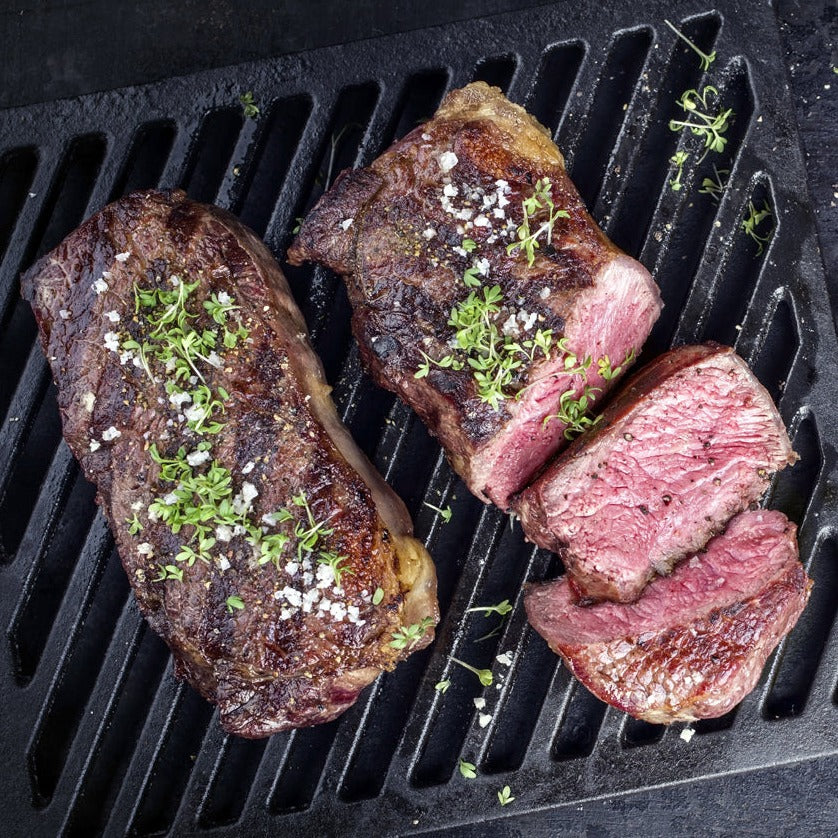Everything You Need to Know About Caviar
Whether you’re curious about caviar or consider yourself a connoisseur, you’re bound to learn something new as we break down this exotic food product that has fascinated the world for centuries. Let’s dive in!
What is Caviar?
Simply defined, caviar is any single salt-cured roe of the family Acipenseridae (commonly known as sturgeon fish).
This sought-after delicacy is famous for its complex flavor profile, fascinating grainy texture, and buttery melting properties that leave consumers with an ocean-fresh aftertaste.
Did you know…? Although the word “caviar” has a French spelling, it is believed to come from the Persian word “Khav-yar”, which roughly translates to “cake of strength” or “cake of power”.

Where Does Caviar Come From?
Hailing from the icy waters of the Caspian Sea (bordered by Iran, Kazakhstan, Russia, Turkmenistan, and Azerbaijan), wild Beluga, Ossetra, and Sevruga are the main source of traditional caviar.
Other types of caviar-producing sturgeon are Sterlet, Siberian, and Kaluga. Caviar-producing sturgeon can also be found in the Black Sea, as well as large lakes and rivers throughout Europe.
In the United States, American White Sturgeon caviar is locally sourced throughout California and the Pacific Northwest.
Did you know…? 95% of the world’s caviar is sourced from the Caspian Sea (Beluga, Ossetra, and Sevruga).
How Is Caviar Made?
The process for producing caviar begins with harvesting the female sturgeon’s eggs (roe) before fertilization. Once harvested, the roe are then cured with salt to both brine and preserve them.
Caviar may be either pasteurized or unpasteurized. Pasteurized caviar will have a longer shelf-life.
While caviar was once sourced exclusively from the wild, it is more common nowadays for sturgeon to be farmed in healthier conditions than their natural habitats. This also curbs overfishing and promotes newer, more ethical production practices.
An Ancient Treat
Caviar has a long trading history that dates back to the 10th century. Written accounts of this decadent dish exist from the epoch of Mongol ruler Batu Khan, the grandson of Genghis Khan.
References have also been found in both Ancient Greek and Roman literature. The scholar Aristotle once poetically described “the eggs of the sturgeon, heralded into banquets amongst trumpets and flowers.”
But it was Henry Schacht, a German immigrant, who is credited with bringing the caviar industry to America in 1837. He found success fishing sturgeon from the Delaware River, treating the roe with German salt, and exporting the caviar back to Europe. Business also
boomed in the United States, with caviar being sourced from the Columbia River as well. With the growing availability of caviar in the U.S., its popularity began to skyrocket.
Did you know…? Caviar used to be served in American taverns alongside ale to induce thirst, much like bar nuts are today.
Popular Types of Caviar
Beluga caviar is the rarest and most expensive type of caviar. It is known for its large, pea-sized pearls that range in color from light silver to black. Its creamy texture paired with its buttery, nutty flavor makes for a lovely, rich taste.
Ossetra caviar (also known as Russian caviar) is a close second in quality to Beluga. Its pearls are medium-sized and range in color from earthy brown to bright gold. Firm on the outside and juicy on the inside, this type of caviar is enjoyed for its bold, briny flavor. As far as high-end caviar goes, Ossetra caviar is relatively inexpensive, making it the most popular caviar in the world.
Sevruga caviar is the most widely available, and therefore the most economical option. But don’t let the price fool you–it packs a pleasant punch! These pearls are small and clear, and present a smooth flavor with a fresh aftertaste.
Kaluga caviar (sometimes referred to as “river beluga”) is sourced from a cousin of the beluga. It is similar in taste, with hues of gold and brown. The kaluga’s large size and river habitat also makes it a wonderfully sustainable option!
Did you know…? Kolikof carries a wide selection of top-rated Ossetra and Kaluga caviar.
How to Select the Right Caviar
With all this variety, you may be wondering what kind of caviar you ought to purchase. Each type has its own distinct flavor profile. This is part of what makes caviar so unique, and why it is important to sample all of them. However, there are a few indicators of premium caviar that you should keep your eyes peeled for.
The size and color of each caviar can help you determine its value. Typically, gold and silver-colored caviar are more aesthetically appealing, and therefore more expensive than their gray or black counterparts.
Another indicator of prime caviar is its shiny appearance. Connoisseurs know to look for caviar that sparkles like a diamond.
Lastly, you’ll want that mouthfeel of “popping” with each piece.
Remember that every caviar has its own distinct features. At the end of the day, it all comes down to personal preference!
Did you know…? Individual caviar can vary in taste and texture, even within the same tin!
How to Serve Caviar
Caviar makes for a wonderful garnish or a spread, but is best when eaten as-is. The ideal way to serve caviar is in a crystal bowl, over ice. Don’t have a crystal bowl laying around? No problem! Any glass bowl will do. Or, you can simply place the tin itself atop a bed of crushed ice.
The most important thing to remember is that you must NOT use a metal spoon to scoop the caviar! Doing so will result in a metallic taste, ruining your roe. Instead, opt for a spoon made of wood, glass, gold, bone, or mother-of-pearl (plastic spoons will also work in a pinch).
If you do decide to prepare it as an appetizer, be careful to keep your ingredients sparse, so as not to distract from the caviar’s already perfect flavor profile. Dollop your caviar on blini, toast, or bread for a scrumptious little snack. Serve alongside melted butter, minced green onions, finely chopped hard-boiled eggs, sour cream, creme fraiche, or lemon wedges. When in doubt, keep it simple!
Did you know…? Kolikof sells mother-of-pearl spoons and other caviar accompaniments.
How to Savor
After all the care that goes into curating the perfect caviar experience, you’ll want to be sure to get the most out of every tin. Take the time to appreciate the aroma before tasting it. It is recommended that you cleanse your palette before eating caviar to fully absorb the flavor. Just a half-teaspoon per bite will provide you with plenty to work with. Roll the caviar around in your mouth like a fine wine to fully capture its unique taste and texture. Eat slowly and savor each exquisite bite!
How to Pair
Is there anything finer than a spoonful of caviar and a glass of champagne? This is a common and most excellent pairing. However, experts agree that the perfect drink to accompany caviar is vodka–the higher the quality, the better. This is because its tasteless and odorless nature will not distract from the caviar itself, which should be the focus. Likewise, avoid pairing caviar with red or white wine, as their flavors are sure to compete.
How to Store
Caviar is extremely perishable and must be kept refrigerated until served. Under no circumstances should you freeze caviar, as this will result in a mushy texture, effectively ruining the roe.
A Healthy Choice
It may come as no surprise that caviar is a superfood, due to being chock-full of vitamins including A, C, D, numerous B vitamins, protein, calcium, iron, magnesium, phosphorus, and selenium. Its benefits are numerous, from supporting the immune system to boosting fertility, and everything in between.
Caviar is rich in Omega-3 fatty acids, which help to lower blood pressure, improve cholesterol, increase cognition, decrease depression, reduce inflammation, and even repair vision in people with macular degeneration!
Caviar also contains antioxidants, which can stave off cell damage, promote collagen production, and delay the aging process. This, along with selenium, helps reduce the overall risk of cancer.
These are only a handful of the healthful properties contained in this scrumptious superfood!
Did you know….? Caviar can act as an aphrodisiac, due to its ability to increase blood flow and the production of testosterone. Is there anything caviar can’t do?!
Where Can I Buy It?
When purchasing caviar, the most important thing to shop for is product quality. Kolikof caviar is renowned for its superb quality and excellent taste. You can feel confident knowing that Kolikof caviar is a high-end experience that’s sure to be enjoyed by all!
Now that you’re the ultimate caviar expert on caviar, you’re ready to impress your friends with your newfound knowledge while serving this exquisite dish!









